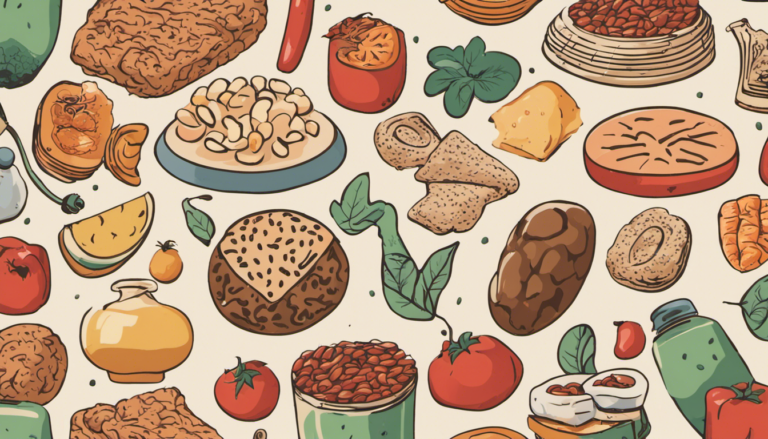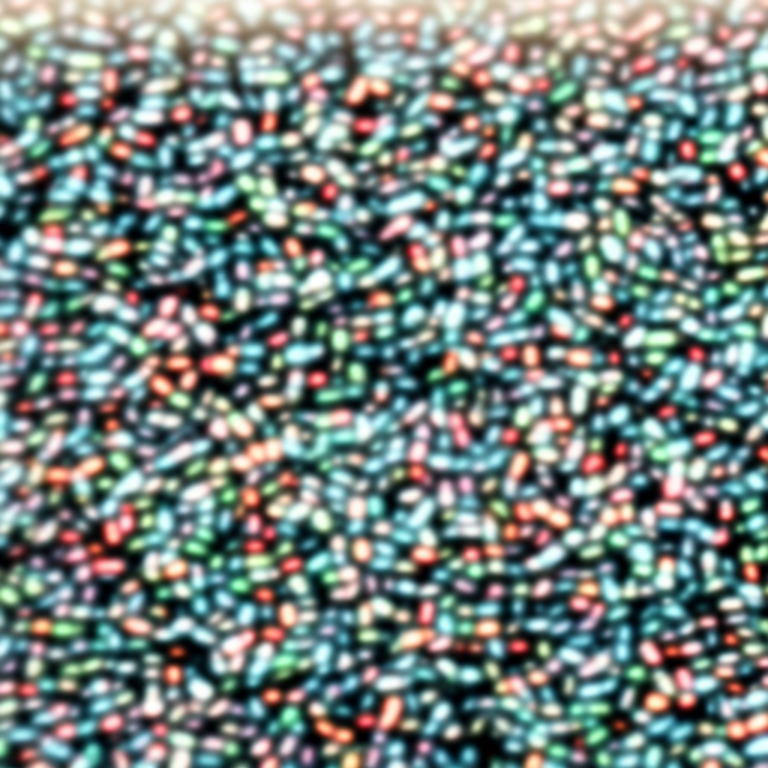Understanding Food Labels: Decoding the information for healthier choices.
Do you sometimes struggle with the hieroglyphs, also known as labels, on your food packaging? Does the nutrition facts panel look more like a secret formula for an advanced chemistry experiment? Let’s face it. Scrutinizing food labels can feel like deciphering a clandestine code shrouded in mystery. In the age of highly processed foods, it’s crucial to unravel this cryptic language to make healthier choices that nourish our bodies rather than harm them. In the modern food landscape, standing clueless in the supermarket aisle is no longer an option. So, switch your detective mode on! Get ready to dive into our comprehensive guide that empowers you by transforming the befuddling numbers, percentages, and alien terms on food labels into transparent, easy-to-understand information. Toss aside the magnifying glass and tweezers! It’s time to decode for healthier choices.
Table of Contents
- Shielding Your Health with Food Labels: A Primer
- Understanding the Nutritional Alphabet: Tracking Macronutrients and Micronutrients
- Label Lingo: Deciphering Preservatives, Additives, and Other Ingredients
- What’s in a Claim?: Navigating health claims for Well-Informed Decisions
- From Scan to Cart: Making Conscious and Healthy Choices at the Grocery Store
- Q&A
- To Conclude
Shielding Your Health with Food Labels: A Primer
Food labels are more than just nutritional mumbo-jumbo on the back of your groceries. Behind the perplexing numbers and complicated scientific terms lie crucial information about what you put inside your body. Unraveling this information is a step towards smarter food choices and promoted health. Let’s dive into the maze of food labelling and uncover the secrets to making healthier decision at the supermarket.
<p>Begin your label-reading journey with the <strong>nutrition facts panel</strong>. From calorie counts to protein ratios, this area provides the quantitative information for each ingredient. Keep an eye out for sugars, as many products hide high sugar content behind the veil of 'low-fat' or 'diet'. Also, understanding the <strong>ingredient list</strong> is a game changer. Ingredients are listed in decreasing order by weight, so the first few elements make up the bulk of the product. Products with unpronounceable or unfamiliar ingredients often tend to be highly processed. And don't forget, <strong>allergens</strong> are usually highlighted or mentioned separately for your safety.</p>
<ul>
<li><strong>Know your fats:</strong> Trans fats are a definitive 'no'. Monounsaturated and polyunsaturated fats are 'good' fats.</li>
<li><strong>Sugar smart:</strong> Words like glucose, fructose, honey, syrup indicate hidden sugars.</li>
<li><strong>Salt check:</strong> Sodium Chloride aka 'salt' in excess leads to high blood pressure.</li>
<li><strong>Allergen alert:</strong> Lactose, gluten, nuts are common allergens often highlighted on packaging.</li>
</ul>
<p>Understanding a food label can feel like decoding a complex secret code. But every time you crack that code, you take a stride towards better health and nutrition. Ultimately, every label decoded is a victory for your health.</p>Understanding the Nutritional Alphabet: Tracking Macronutrients and Micronutrients
Macronutrients – the nutritional giants that power our bodies – fall into three primary categories: carbohydrates, fats, and proteins. These nutrients are the key players in our daily energy production, and understanding them is the first step in decoding your food labels.
- Carbohydrates: The primary source of energy for all body functions, found abundantly in grains, fruits, vegetables, and dairy products.
- Protein: The building blocks of muscle, skin, enzymes, and hormones. Primarily found in meat, dairy, and legumes.
- Fat: The most energy-dense macronutrient and a crucial component of cell membranes and hormones, found in oils, butter, and meat.
Moving past the macros, we come to the tiny elements that make a big impact. Often overlooked, Micronutrients are an important part of the nutritional alphabet. These include our vitamins and minerals – nutrients essential for many biological reactions in our bodies.
- Vitamins: Essential for converting food into energy, bolstering our immunity, and ensuring proper cell function. Present in diverse foods like fruits, vegetables, grains, dairy, and meats.
- Minerals: Key players for our bone health, muscle function, and maintaining our body’s water balance. Found in foods like meats, whole grains, fruits, vegetables, and dairy.
By understanding the big picture – literally the micro and macro – of nutrition, you’ll become more proficient at decoding food labels and making healthier choices on your own terms.
Label Lingo: Deciphering Preservatives, Additives, and Other Ingredients
Walking down the grocery aisle, you may find yourself confronted by a litany of befuddling terms and phrases on food packaging. Preservatives, additives, and various other incomprehensible ingredients, all hiding in plain sight. Uncertainty can make it difficult to know exactly what you’re feeding yourself or your family. However, knowledge is power! Let’s decode these labels and pave the way for healthier choices.
Firstly, the term Preservative refers to any ingredient added to food to extend its shelf life, either by inhibiting the growth of bacteria or by preventing oxidation. Some common examples include sodium benzoate and potassium sorbate. Additives, on the other hand, are substances added to enhance the taste, texture, or appearance of the food. Familiar names here might be monosodium glutamate (MSG), used to boost flavor, or food coloring used to enhance visual appeal. Other mysterious components can include:
- Stabilizers and emulsifiers: These help maintain the consistency of the food. Xanthan gum, for example, is often used in dressings and sauces.
- Thickeners and vegetable gums: These increase the viscosity of food. Agar, used in jellies and puddings, and pectin, used in jams and jellies, are examples.
- Anti-caking agents: These keep powdery or granulated ingredients (like baking powder or powdered sugar) from clumping together. Silicon dioxide is a common anti-caking agent.
Remember, not all of these ingredients are harmful. However, being mindful of what you eat and choosing products with fewer preservatives and additives is always a good step towards a healthier lifestyle.
What’s in a Claim?: Navigating health claims for Well-Informed Decisions
Unraveling the enigma of food labeling is crucial in adopting a healthier lifestyle. With the plethora of definitive and exclamatory health claims dotting product packaging, it can often be overwhelming to discern between fact and fiction. Vitamin enriched!, Zero Trans Fat!, Boosts Immunity! – might seem pleasing to the ears but do we actually know what lies beneath these claims?
The pursuit to understand these labels does come with its bit of intrigue and curiosity. Does ’Low in Fat’ mean it’s healthy? Not necessarily. Often, a reduction in fat might correspond to an increase in sugar levels. Overindulging in these can lead to health repercussions, such as weight gain or health diseases. Similarly, a product proclaiming ‘No Added Sugars’ does not necessarily make it a sugar-free product. It could still house natural sugars. The trick is to not fall for the big highlighted claims, but to seek and understand the nutrition facts chart and ingredients list that acts as a tell-all script to your food product’s reality:
- Know your sugars: Names like fructose, glucose, maltose, and even organic cane syrup are nothing but aliases for sugar. Any ingredient ending in “-ose” is usually a type of sugar!
- Unveil the secret of servings: Be sure to check the serving size. Products may seem lower in calories or fat, but that may be for a smaller portion than you would usually consume
- Decipher the fiber myth: Foods that are high in fiber should have 5g or more per serving but beware of the added sugars that might creep in.
Remember, developing familiarity with food claims and labels can be an empowering tool in managing your diet, improving health outcomes, and leading to informed dietary choices. So, the next time you pick up a product, take an extra minute to look beyond the bold health claims!
From Scan to Cart: Making Conscious and Healthy Choices at the Grocery Store
Navigating the grocery store aisles can often feel like trying to understand a foreign language. Brightly colored, strategically placed packages shout at us from the shelves, each touting their array of healthful features – “Low-fat!” “High-protein!” “No added sugar!” Understanding these labels can help us make healthier choices, but doing that effectively requires a bit more knowledge.
Begin by peering past the superficial health claims on the front of a package. Look for the Nutrition Facts Panel on the back, which gives details of key nutritional elements. This includes the serving size, which might be less than you’d typically consume. Below that, you’ll see calories and three core nutrient groups: fats, carbohydrates, and proteins. Fats are split into saturated and trans fats, both of which you should aim to limit. Carbohydrates include fiber, which you should aim to get plenty of, and sugars, which should be taken in moderation.
Q&A
Q: Why is understanding food labels crucial to our health?
A: Understanding food labels aids in making informed choices about what we consume. These labels carry valuable information about nutritional content, helping identify if products are high in harmful components like saturated fat, sugar, or sodium.
Q: Where do we find the nutrient information on the food label?
A: Nutrient information is found in the Nutrition Facts panel, usually located at the back part of the product packaging. It lists out key information like serving size, calories, and nutritional content.
Q: What does “serving size” mean on a food label?
A: The “serving size” pertains to the recommended amount of consumption for a particular food or drink. This standard measure helps consumers understand the quantity of nutrients, calories, and impact on the body that might come with each serving.
Q: How do I figure out the number of calories in packaged food?
A: The food label displays the caloric content per serving. If you consume more or less than the specified serving size, simply adjust the calculations accordingly. Remember, an average daily calorific intake is 2,000 calories, but this may vary depending on age, sex, and physical activity level.
Q: How can we use the percentage Daily Value (%DV) on food labels?
A: The %DV gives you a simple snapshot of a nutrient’s contribution to your daily diet. If the %DV is 5% or less, it’s considered low for that nutrient, while 20% or more means it’s high. This detail can especially help those trying to limit intake of certain nutrients like sodium, fat, and cholesterol.
Q: What is the difference between ”reduced fat” and “low fat” on food labels?
A: “Reduced fat” means the product contains 25% less fat than the regular version, while “low fat” signifies that a product includes 3g or less fat per serving. It’s important not to assume all low-fat or reduced-fat products are healthier options; they may still have high sugar or salt content.
Q: What does “trans fat-free” mean on food labels?
A: “Trans fat-free” means the product contains less than 0.5 grams of trans fat per serving. However, note that if the ingredient list includes “hydrogenated” or “partially hydrogenated” oils, these products still contain small amounts of harmful trans fats.
Q: How can I tell if a product is high in dietary fiber?
A: Check the %DV on the food label. If the %DV for dietary fiber is 20% or more, the product is high in fiber. A high-fiber diet can help lower risk of cardiovascular disease and type 2 diabetes.
Q: Does “natural” on a food label mean it’s healthier?
A: Not necessarily. “Natural” doesn’t confirm that a food is healthier or of higher quality. It merely specifies that the product has no artificial ingredients or added colors and is minimally processed.
Q: How can understanding food labels help people with special dietary needs?
A: Food labels are particularly beneficial for individuals with allergies, dietary restrictions, or certain health conditions. They can shed light on ingredients, denote allergen information, and point out the presence of components like gluten, lactose, or specific types of fats.
To Conclude
As we wrap up this fascinating journey through the world of food labels, we remind ourselves with an affectionate nudge that the path to healthier choices often begins in the palm of our hand. Remember, these labels are no longer cryptic scrolls of the ancients. Rather, they are friendly nutrition maps elucidating the journey, guiding us through the labyrinth of nutrients on shop shelves, in grocery baskets and ultimately, on our kitchen shelves.
There’s no denying that a comprehensible and educated understanding of them can greatly assist our quest for a nourishing lifestyle. Empowered with newfound knowledge, we are now ready to navigate our way in the grocery aisles, confronting choices with a clear deciphered understanding of their health implications.
Reading and understanding food labels is like having a secret conversation with our food, allowing us to take control of our eating choices, and ultimately, our health. So, let us go forth, with clarity in every eye and a code-breaking spirit in every heart, making healthier choices our new language of love for ourselves. Have a delicious journey, codemasters!







